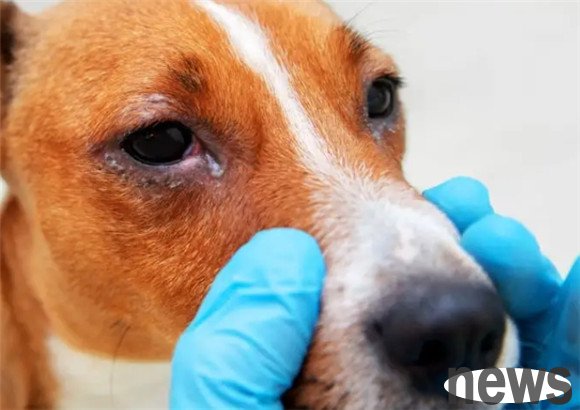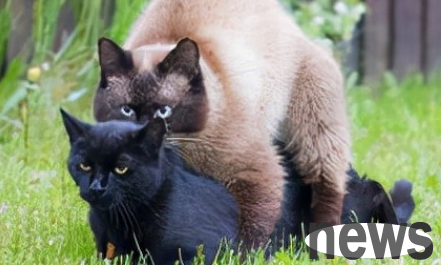The basic knowledge of cat heart auscultation, novices should know!
The basic knowledge of cat heart auscultation, novices and cat slaves should understand! In cat physical examinations, heart sound auscultation is essential and is also the most meaningful link in animal heart examinations in clinical practice. Its importance is no less than that of cardiac imaging examinations. A conventional heart sound auscultation can provide multiple information that can help diagnose the disease. However, heart auscultation seems very simple, but there are many things worth exploring.

1. What is heart sound?
In each heartbeat cycle of a healthy cat, two rhythmic alternating sounds can be heard, called heart sounds. The first one is called the first heart sound, and the latter one is called the second heart sound. In pathological conditions, cats will have third and fourth heart sounds, the third heart sound is after the second heart sound, and the fourth heart sound is before the first heart sound. Fetal heart sounds are shown during the fetal period.
The first heart sound occurs during the ventricular systolic period, so it is also called the systolic heart sound. The two atrioventricular valves are closed at the same time, the ventricular muscles contract, and blood flow hits the arterial wall and produces. The pitch is low, dull, lasts for a long time, and the end is longer.
The second heart sound occurs during the ventricular diastolic period, so it is also called the Zhangxin sound, which is a vibrating sound produced by the simultaneous closing of the aortic valve and the pulmonary valve. High pitch, short duration, short end note.
The third heart sound occurs in the early stage of ventricular diastolic, and blood flows into the ventricle from the atrium, causing vibrations in the ventricle wall. The sound is weak, short and low. For normal cats, the third heart sound cannot be auscultated. If the third heart sound is heard, it is seen in afflicted cats with congestive heart failure or ventricular hypertrophy.
The fourth heart sound, also known as the atrial sound, is produced by the vibration of atrial contraction. Under normal circumstances, cats cannot be heard. If they hear, they are pathological fourth heart sounds, which are seen in atrioventricular block, etc.
Feal-like heart sound, which is normally seen in the pulsation of the heart during the fetal period. Pathologically, cats with severe cardiovascular insufficiency or acute heart failure. Due to compensatory acceleration of heartbeat, the diastolic period is shortened. The interval between the first heart sound and the second heart sound becomes equal. The intensity and sound quality of the two heart sounds also become similar.
2. How to distinguish between the first heart sound and the second heart sound?
Under normal conditions, the tone characteristics of the first and second heart sounds are different; according to the pulse difference, the first heart sound is synchronized with the pulse, and the second heart sound is out of sync; according to the time interval of the heart sound, the first heart sound is before the short interval and the second heart sound is after it. The second heart sound is before a long interval and the first heart sound is after a long interval. This is not applicable under pathological conditions. For example, when ventricular premature beats occur, the pulse does not match the heart sound. At this time, it can be distinguished in combination with ECG waveforms.
III. Cat cardiac auscultation method
Animal standing auscultation (put the heart in a normal anatomical position to avoid murmurs caused by abnormal positions, such as the friction sound between the heart and the chest wall);
Auscultation is divided into chest wall quantiles (3 auscultation sites on the left chest wall and 1 auscultation site on the right chest wall), and all sites need to be auscultation (such as the mitral valve position of a cat may miss the congenital heart disease in a young cat);
Separate the heart and lungs Auscultation (avoid confusion of heart murmurs and respiratory sounds);
cats are more difficult to auscultivate, and various effects need to be considered comprehensively:
a. Because the heart is relatively small, the auscultivation site can change slightly;
b. The heart may "lost" with age, resulting in changes in the auscultivation site;
c. The heart is more mild than that of cats;
d. The heart rate is faster;
e. Others. Such as grunts; some heart noises can be expressed by accelerating the heart rate. If you find arrhythmia, further examination is required (ECG)

4. Changes in heart sound frequency
Under normal circumstances, two heart sounds can be heard in each cardiac cycle, and the number of cardiac cycles per minute is the heart rate. Pathological changes in heart sound frequency include tachycardia and bradycardia.
5. Changes in the intensity of heart sounds
The intensity of heart sounds is determined by two factors: the heart sound itself and the heart sound conducting medium. There are two changes in clinical practice: heart sound enhancement and heart sound weakening. When determining that the heart sound is enhanced, auscultation must be performed in the apical part of the heart and the base of the heart. If both places are enhanced or weakened, it can be considered that the heart sound is enhanced or weakened.
Factors of the heart sound itself: myocardial contraction force, heart valve state, circulating blood volume
factors of the conduction mediator: the thickness of the chest wall, the state of the lung lobe, and the pericardial cavity of the pleural cavity.
6. Precautions for auscultation
Before auscultation, you should first touch the heart beat on the surface of the chest wall to find the strongest beat site. You can start auscultation from this site and identify its intensity. Experienced veterinarians can tell whether the heartbeat enhancement is caused by excitement or due to enlargement of the heart, which usually causes excitement to weaken as the animal calms. The membrane-surface listening head of the stethoscope can collect higher frequency sounds and is suitable for the auscultation of normal first and second heart sounds. Abnormal heart sounds can be divided into short heart sounds (such as heart sound splitting or galloping horse rhythm S3 or S4) and longer heart sounds (most heart murmurs). The galloping horse is a low-frequency diastolic sound, and should be listened to with a bell-shaped listening head. For stethoscopes with a single listening head, tightly pressing against the chest wall and applying mild pressure is the auscultation effect of the membrane surface, while touching the chest wall lightly is the bell-shaped listening head effect. Cardiac murmurs are usually caused by turbulent flow or high-speed blood flow in the heart or large blood vessels. When auscultation, you should choose to perform it in a quiet room, as wheezing will make it more difficult to auscultation. When auscultation of a cat, try to move it close to running water or alcohol cotton balls to avoid cat gasping. Sometimes respiratory sounds may be mistaken for heart murmurs, and the animal's breathing process needs to be observed while auscultation to make identification. Various interferences can affect auscultation, including tremor, muscle tremor, hair and stethoscope friction, gastrointestinal peristalsis and indoor noise.




